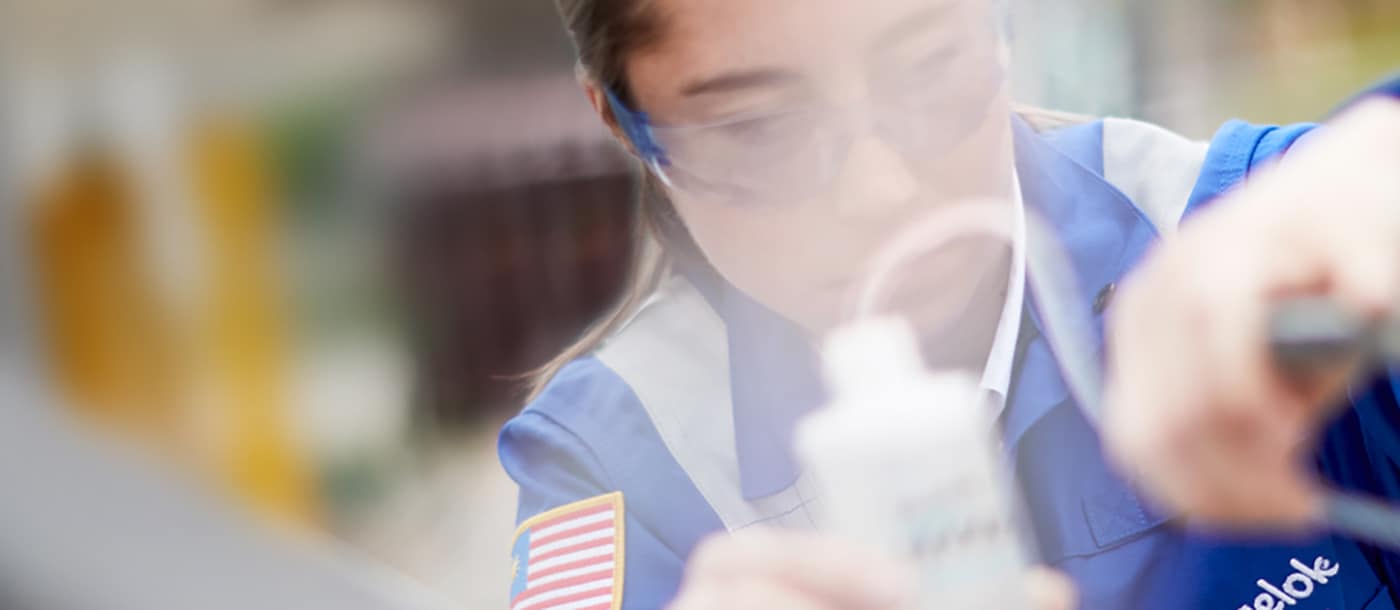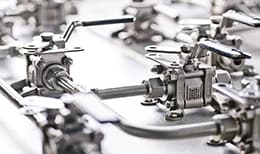
Sensores de Caudal (Serie FV4) Swagelok®
Mediciones precisas del caudal de gas gracias a la operación fiable de los sensores de caudal Swagelok® serie FV4.
Ampliar la InformaciónUtilize Swagelok® FV4 series flow sensors to precisely monitor variations in gas system flow. These sensors feature a snap-action float mechanism with a calibrated orifice that moves vertically within the float guide, enabling precise actuation for accurate gas flow detection as the flow rate changes. The embedded magnet in the float above the orifice alternates electrical continuity between the leads on a nearby reed switch, thereby detecting flow fluctuations.
Constructed entirely of welded 316L stainless steel, these sensors offer robust durability and secure fluid containment. Additionally, the replaceable switch assembly located outside the flow path facilitates straightforward maintenance. The FV4 series flow sensors are designed to withstand working pressures up to 5000 psig (344 bar).
Flow Sensor Specifications
| Material | 316L SS |
| Temperature | –40 to 175°F (–40 to 79°C) |
| Working Pressure | Up to 5000 psig (344 bar) |
Have questions about managing flow in your facility?
Flow Sensor Catalogs
Locate detailed product information, including materials of construction, pressure and temperature ratings, options, and accessories.
Features: Senses increasing or decreasing flow in gas systems; Actuates an electrical switch at a predetermined flow range; Welded 316L SS construction; Working pressures up to 5000 psig (344 bar)

Compressed Gas Leak Detection Services
Receive help identifying and quantifying compressed gas leaks so you can prioritize the most critical issues to address based on potential for emissions reduction and safety, cost, and productivity improvement.
Learn About Leak Detection ServicesSwagelok Resources Curated for You

Common Causes and Costs of Fluid System Leaks
Fluid system leaks are a common occurrence in most plants. Learn how and why leaks occur, how to locate and test for them, and ultimately how to develop a strategy to address and reduce leaks plantwide.

How to Isolate Industrial Fluid Systems with Block Valves
The isolation of industrial fluid system lines prior to maintenance is vital to plant safety. One of the safest ways to isolate a fluid system line is to install two block valves. Learn how to design proper configurations for your system.

Правила, которые помогут обеспечить правильную работу пробоотборной системы
Соблюдение этих правил позволит вам увеличить достоверность и репрезентативность проб на промышленной системе.

Технологические измерения—передовой опыт для импульсных линий
Если сосредоточить внимание только на датчике, найти проблемы в КИП может быть сложно. Советы и передовой опыт компании Swagelok помогут вам научиться решать проблемы на вашей технологической линии КИП.
